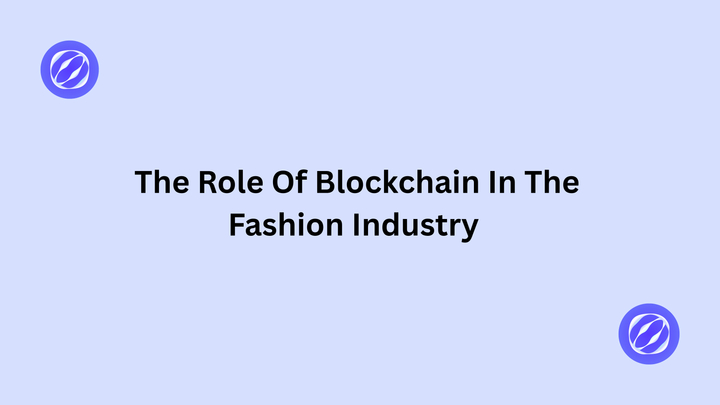TOKEN 2049 Dubai: key takeaways and Emerging Trends in Web3 (Part 2)

The continuation of the Token 2049 Dubai (part2): key takeaways and Emerging trends in Web3 Part1. The next
4.Governance Evolution: Smarter DAOs Take Center Stage at TOKEN2049
The DAO (Decentralized Autonomous Organization) landscape is undergoing a radical transformation, moving beyond basic token voting toward dynamic, self-improving governance systems. At TOKEN2049, leading projects showcased cutting-edge mechanisms designed to solve key challenges: voter apathy, plutocracy, legal uncertainty, and cross-chain coordination.
Key Innovations in DAO Governance
1. Advanced Voting Mechanisms
🟣 Quadratic Voting & Funding
- Problem: Whale dominance in token-weighted voting
- Solution: Quadratic systems (1 token ≠ 1 vote) where voting power scales more democratically
- Example: Gitcoin Grants uses quadratic funding for fairer public goods financing
🟣 Delegated Governance with Staking
- Problem: Low voter participation
- Solution: Token holders delegate votes to experts, incentivized via staking rewards
- Example: Optimism’s Citizen Houses, Aave’s stkAAVE delegation
2. Dispute Resolution & Oracle-Guided Governance
🟣 On-Chain Courts & Oracle Disputes
- Problem: DAOs struggle with subjective decisions (e.g., treasury disputes)
- Solution: Hybrid human/machine arbitration via decentralized oracles
- Example: Kleros Court, UMA’s Optimistic Oracle
🟣 Real-Time Governance Adjustments
- Problem: Slow, rigid governance leads to exploits (e.g., DeFi hacks)
- Solution: AI-monitored voting with emergency intervention
- Example: Gauntlet’s risk simulation for DAO proposals
3. Multi-Chain & Legal-Enabled DAOs
🟣 Cross-Chain Governance
- Problem: DAOs fragmented across L2s, appchains
- Solution: Mesh Security (e.g., EigenLayer restaking for shared DAO security)
- Example: Cosmos Interchain Security, Polygon’s AggLayer for DAOs
🟣 Legal Wrappers & Compliance
- Problem: Regulatory ambiguity around DAOs
- Solution: On-chain legal entities (e.g., Swiss Association DAOs)
- Example: Molecule’s biotech DAO legal frameworks
Why This Matters
The next generation of DAOs is evolving into self-sustaining, adaptive organizations that can:
✅ Prevent plutocracy (Quadratic voting, delegation)
✅ React to crises faster (Oracles + AI monitoring)
✅ Operate across chains (Interchain governance)
✅ Navigate real-world law (Legal entity integration)
The Future of DAOs Post-TOKEN2049
The discussions highlighted three seismic shifts coming to DAOs:
- AI-Augmented Governance : Machine learning models to simulate proposal outcomes
- Fractal DAOs : Sub-DAOs with specialized governance (e.g., Aave’s risk DAO)
- Regulatory Clarity : Jurisdictions like Wyoming & Switzerland embracing DAO legal status
Projects like Arbitrum DAO, Uniswap Foundation, and MakerDAO are already pioneering these models, signaling that DAO 2.0 will blur the lines between decentralized and traditional organizations.
5.NFTs with Utility: The Next Wave of Adoption (Beyond PFP Hype)
At TOKEN2049, the conversation around NFTs matured dramatically, shifting from speculative collectibles to real-world utility across industries. While PFP (profile pic) NFTs drove the first bull cycle, builders are now focusing on functional NFTs that solve tangible problems in gaming, finance, licensing, and physical asset ownership.
Key Sectors Driving Utility NFTs
1. 🏡 Real-World Asset (RWA) Tokenization
Problem: Illiquid markets for real estate, luxury goods, and intellectual property.
Solution: NFTs as fractionalized ownership certificates with embedded legal rights.
- Real Estate: Platforms like Propy enable NFT-based property deeds.
- Luxury Assets: WatchBox tokenizes high-end watches for trading.
- Carbon Credits: Toucan Protocol turns offsets into tradable NFTs.
2. 🎮 GameFi & Dynamic In-Game Assets
Problem: Static NFTs limit gameplay innovation.
Solution: Evolving NFTs that change based on usage, achievements, or upgrades.
- Parallel’s AI-powered game cards (NFTs that level up)
- Illuvium’s interoperable in-game items (usable across multiple titles)
- Yuga Labs’ “Otherside” (NFT land with gameplay utility)
3. 📜 Licensing & IP Management
Problem: Royalty disputes and opaque ownership in media/music.
Solution: Smart contract-enforced licensing NFTs.
- Sound.xyz (NFTs with embedded music rights)
- Opulous (Music copyrights as tradable NFTs)
- VeeFriends (NFTs granting real-world event access)
4. 🎓 Education & Credentialing
Problem: Fake diplomas and unverifiable resumes.
Solution: Soulbound Tokens (SBTs) as permanent, non-transferable credentials.
- Gitcoin Passport (Decentralized identity verification)
- Ethereum’s POAPs (Proof of attendance tokens)
Why This Shift Matters
- Mainstream Adoption: Businesses and institutions now see NFTs as tools, not just JPEGs.
- Regulatory Clarity: Utility NFTs face fewer legal hurdles than speculative assets.
- Interoperability: A single NFT could serve as a concert ticket, loyalty pass, and DeFi collateral.
The Future: Hybrid Physical/Digital NFTs
TOKEN2049 highlighted emerging use cases like:
- NFT car titles (Mercedes-Benz experimenting with blockchain VINs)
- Healthcare NFTs (Medical records with patient-controlled access)
- AI x NFT fusion (Generative NFTs that evolve via AI prompts)
Prediction: The next NFT bull run won’t be led by art, it’ll be driven by utility-first projects bridging Web3 with real-world needs.
6.Modular Blockchain Architectures: The Future of Scalable Web3 (Token2049 Highlights)
At TOKEN2049, the blockchain scalability debate shifted from monolithic vs. modular to how modular designs will redefine Web3 infrastructure. Projects like Celestia, EigenLayer, and Cosmos SDK-based chains demonstrated how decoupling core blockchain functions unlocks unprecedented flexibility for developers.
Why Modular Blockchains? The Core Value Proposition
Traditional monolithic chains (e.g., Ethereum L1, Solana) bundle:
- Execution (smart contracts)
- Consensus (transaction ordering)
- Data availability (storage)
- Settlement (finality)
Modular chains split these layers, allowing each to be optimized independently:
| Layer | Modular Approach | Example Projects |
|---|---|---|
| Data Availability (DA) | Dedicated networks for cheap storage | Celestia, EigenDA, Avail |
| Execution | Rollups/L2s for scalable compute | Arbitrum, Optimism, zkSync |
| Consensus | Shared security via restaking/validation | EigenLayer, Babylon Chain |
| Settlement | Cross-chain hubs for finality | Cosmos Hub, Polygon AggLayer |
Key Benefits Showcased at TOKEN2049
1. Faster Time-to-Market for Developers
- App-Specific Chains: Projects no longer need to fork Ethereum or Solana. Instead, they can:
- Use Cosmos SDK to launch a custom chain in days
- Plug into Celestia DA for low-cost storage
- Leverage EigenLayer for shared security
- Example: dYdX v4 migrated to a Cosmos app-chain for better performance.
2. Customizable Security & Performance
- Flexible Security Models:
- Restaking (EigenLayer): Borrow Ethereum’s security for new chains.
- Interchain Security (Cosmos): Lease validator sets from larger chains.
- Optimized Execution:
- Gaming chains can prioritize low latency.
- DeFi chains can enable advanced privacy (e.g., zk-rollups).
3. Scalability Without Centralization
- Monolithic chains face the scalability trilemma (decentralization vs. speed vs. security).
- Modular chains sidestep this by:
- Offloading DA to specialized layers (e.g., Celestia)
- Using L2s for execution (100K+ TPS possible)
- Example: Fuel Network (modular execution layer) achieves parallelized transactions.
Top Modular Projects to Watch
- Celestia – First modular DA network, now live with 1,000+ rollups testing.
- EigenLayer – Ethereum restaking for shared security (TVL: $15B+).
- Cosmos SDK – Dominant toolkit for app-specific chains (e.g., Injective, Sei).
- Avail (Polygon) – Competitor to Celestia focusing on Ethereum alignment.
- Fuel Network – High-performance modular execution layer.
Challenges & Debates
While modularity is gaining traction, TOKEN2049 panels highlighted open questions:
- Interoperability: How will hundreds of modular chains communicate? (Solutions: IBC, LayerZero, AggLayer)
- Liquidity Fragmentation: Will multi-chain ecosystems dilute DeFi TVL?
- User Experience: Can wallets/explorers keep up with cross-chain complexity?
The Future: Modular Dominance?
Experts at TOKEN2049 predicted:
- By 2025, 80%+ of new L1s will be modular (vs. monolithic).
- Ethereum will evolve into a settlement + security layer for modular rollups.
- AI-powered chains will leverage modularity for on-demand resource allocation.
Final Thought: Modular architectures aren’t just an upgrade, they’re a paradigm shift enabling Web3 to scale beyond niche use cases. The next wave of adoption will be built on these flexible, interoperable foundations.
7.zk & Privacy-Enhancing Technologies: The Next Frontier (Token2049 Insights)
At TOKEN2049, zero-knowledge proofs (zkPs) and privacy tech took center stage, moving beyond theoretical hype to real-world adoption. Projects demonstrated how zk is revolutionizing Ethereum scaling, confidential DeFi, and even regulatory compliance—proving that privacy and scalability can coexist in Web3.
key zk Breakthroughs Showcased
1. zkEVMs: Programmable Privacy for Ethereum
Problem: Regular smart contracts expose all data on-chain.
Solution: zkEVMs let developers build private, Ethereum-compatible dApps.
- Type 1 zkEVMs (Full Ethereum equivalence) → Taiko
- Type 2 zkEVMs (EVM-equivalent, minor tweaks) → Scroll, Polygon zkEVM
- Type 4 zkEVMs (High-speed, custom circuits) → zkSync Era
Use Case: Private DAO voting, stealth wallets, enterprise DeFi.
2. zk-Rollups: Scaling with Privacy
Problem: High fees and slow speeds on Ethereum L1.
Solution: zk-Rollups batch transactions off-chain and prove validity via zkPs.
- StarkNet (Cairo VM, general-purpose zk-Rollup)
- Aztec (Privacy-first zk-Rollup for confidential DeFi)
- Manta Pacific (Modular zk-L2 for RWAs)
TOKEN2049 Highlight:
"zk-Rollups will process 80%+ of Ethereum transactions by 2025." Sandeep Nailwal (Polygon)
3. Privacy-Preserving DeFi Tools
Problem: Transparent blockchains leak trading strategies.
Solutions:
- Penumbra (Private DEX for shielded swaps)
- Sindri (zkKYC for compliant anonymity)
- Fhenix (Fully Homomorphic Encryption for on-chain secrecy)
Game-Changer: Institutions can now trade DeFi without front-running risks.
Beyond Finance: zk’s Expanding Horizons
- zkIdentity: Prove your age/credentials without revealing data (e.g., Worldcoin, Polygon ID).
- zkML: Verify AI model outputs without exposing weights (Modulus Labs).
- zkGaming: Hide in-game moves until finality (Dark Forest).
Challenges Ahead
While zk tech is advancing rapidly, hurdles remain:
- Hardware Costs: zk-proof generation requires GPUs/ASICs.
- UX Complexity: Users don’t understand "trustless privacy."
- Regulatory Pushback: Will governments accept financial privacy?
The Future: zk as Web3’s Default?
TOKEN2049’s big prediction:
*"By 2026, zk-tech will be as fundamental to blockchains as TCP/IP is to the internet."*
3 Trends to Watch:
- Hybrid Privacy: Opt-in transparency (e.g., Tornado Cash 2.0).
- zk-ASICs: Custom chips for faster proofs (Ingonyama).
- Regulatory zk: Governments adopting zk for data compliance (EU’s eIDAS 2.0).
The zk revolution isn’t coming, it’s already here. The next wave of Web3 adoption will be private by default.
Conclusion
TOKEN2049 Dubai 2025 wasn’t just a display of cutting-edge tech, it was a reflection of a maturing Web3 ecosystem ready to scale, secure, and decentralize every layer of digital interaction. The key innovations showcased, ranging from AI and modular blockchains to DePINs and smarter DAOs, signal a shift toward usability, sustainability, and global integration.
As the blockchain industry continues to converge with other frontier technologies, it’s clear that the future of Web3 will be driven by collaborative innovation, regulatory awareness, and a renewed focus on real-world utility. TOKEN2049 has once again proven to be the breeding ground for ideas that will shape the next decade of decentralized evolution.



Comments ()